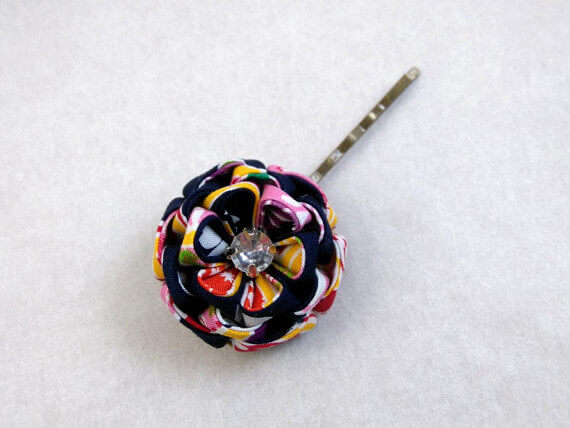Dainty work: Tsumami-Zaiku and Kanzashi June 5, 2016 – Posted in: Art, Crafts – Tags: culture, geisha, history, Japanese Traditional Art, Kanzashi, Tsumami-zaiku
**Update on 25/9/2021** It has been 5 years since I wrote this article. Naturally, I have gain a little bit more knowledge on the history of the Tsumami-Zaiku. If you are interested in reading a slightly more elaborate article on the history of Tsumami-Zaiku, please follow this link to my latest article.
In my first blog post, I made a brief introduction on the art of knot-making in Japan. Of course, like many other people, my love for Japanese craft doesn’t stop there. Today, I am going to write about another type of Japanese traditional craft which I spent most of my time on – Tsumami-Zaiku. This will be another one of my longer articles, but I promise this will be interesting.
Kanzashi =/= Tsumami-Zaiku
In the West, Tsumami-zaiku is often called “Kanzashi” or “Kanzashi flower”. However, the word kanzashi (“簪” in Japanese) itself means “hairpin”. Like in any other culture, hair accessories can be made from various materials, by various methods. They can also come in different shapes and sizes. Kanzashi is no different: There is hirauchi kanzashi (平打簪) which is a totally flat metal hairpin; there is also tama kanzashi (玉簪) which features a medium-size bead on the hairpin.
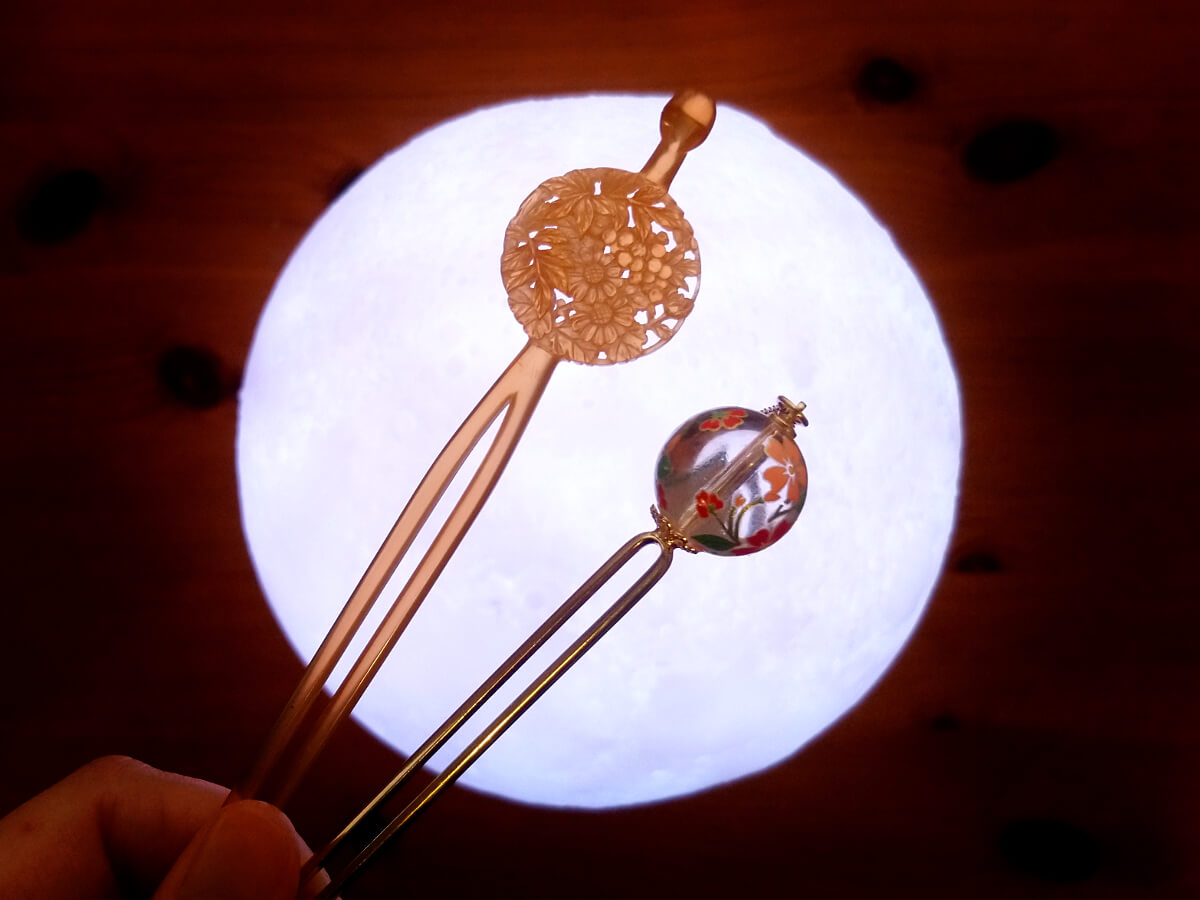
Although the beautiful Geisha and Maiko might have given us an impression that Japan has the most elaborate hair ornaments of all times, kanzashi had not been popular until the mid-Edo period (1700s-ish), when Japan was under the rule of the Tokugawa clan. It was only when women’s hairstyle became increasingly complicated at that point that more and more kanzashi could be attached.
There were claims that the use of kanzashi could be traced back to the Jyomon period (14000-a few centuries BC). These sticks were believed to have the power of keeping devils away, there they were used to bind hair into a bun. However, some said that artifacts retrieved by archaeologists has extra teeth so they looked more like a comb than a kanzashi.
On the other hand, some said that kanzashi was introduced to Japan from Tang dynasty (China) in the Nara period (710-794). However, after the Nara period, women seemed to prefer the natural beauty of hair so letting their hair down became the new trend and kazashi became less popular. Not until the end of the Sengoku period (1590) did hair buns regain popularity and the use of kazashi became trendy again. After the mid-Edo period, kanzashi were available in a wide range of styles and materials. But in the wake of the Meiji Restoration, western hair style become the latest trend and the kanzashi culture faded again.
Tsumami-Zaiku – The Craft
The actual craft that “Kanzashi flower” refers to in the Western world is called “Tsumami-zaiku” (つまみ細工), literally meaning “pinching handiwork”. For a slightly irrelevant sidetrack: “Zaiku” can also be literally translated as “small work”; there is also “Daiku”, literally translated as “big work”, which refers to carpentry and some other construction works.

Tsumami-zaiku is the work of creating an object, often flowers, by assembling folded and glued square pieces of fabric called “tsumami” onto a base. There is no sewing work involved – tsumamis are attached to the base with glue. There are a few different ways to fold and glue a piece of fabric, resulting in different shapes of tsumami. (Since this article is getting a bit long, these will be covered in another article at a later date.)
The fabric squares are generally sized between 3×3 cm² and 1.5×1.5 cm², but there isn’t a limit to the size of the fabric. In fact, if you search “つまみ細工かんざし モダン” (tsumami-zaiku kanzaishi modern) on google image, you can find some work which were created with very big tsumamis. Apart from fabric, pearls, gems and jingle bells are often used for decorations as well.
My early work
I have been creating Tsumami-Zaiku accessories for a while now and I would say I’ve just started to get the hang of it. I won’t say it is a very difficult craft comparing to other things that I have try, but Tsumami-Zaiku requires the most patience and precision. Cutting 40 odd rather small pieces of fabric to the exact size for one kanzashi alone was very trying for me at the beginning. Here are some of my earlier works.
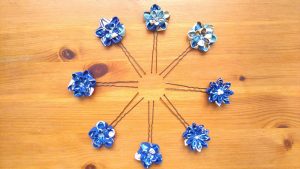
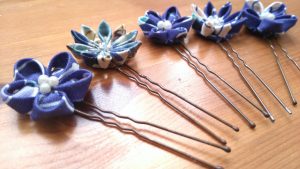
These are one of my early experimental work in 2016 when I first started. I have tried using different shapes, sizes, and numbers of tsumamis to create the flowers, as well as different pearl decorations. I have also tried putting them on bobby pins and you could see them here.
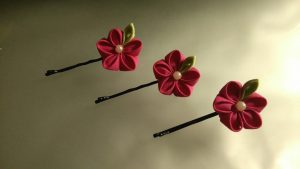
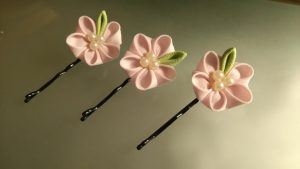
Crimson tsumami-zaiku bobby pin and pink tsumami-zaiku bobby pin
Another experimental work using different tsumamis on the same flower. This design seems to be quite popular.
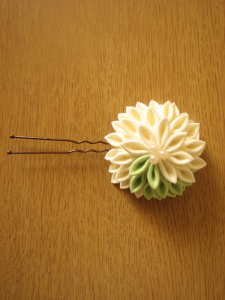
Product page: Tsumami-zaiku kazashi with a spiral pattern
This kazashi was created on a dome base rather than a flat base. It was more difficult to make, but this is my favourite way of making tsumami kanzashi.
This cute and colourful hair clip was created in 2018, featuring a camellia made with printed Japanese motif fabric. The Japanese printed fabric was highly popular when we had our store in the Etsy Made Local Christmas Fair.
These are all I’ve got for you today. Thank you for reading this very long post and I hope you enjoyed it.
**Update Summer 2021** Since last time we edited this article, we had done numerous experiments and resulted in a lot of new designs ( almost 5 years on!). The more latest designs are available on our Website’s shop and our Etsy shop . Here is a few examples our current designs:
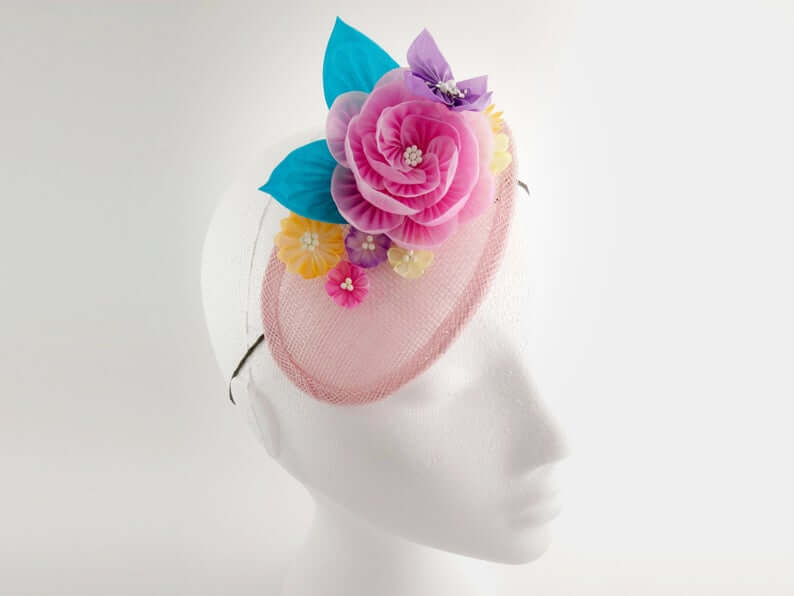
Pink Peony Teardrop Fascinator with Butterfly and Flowers 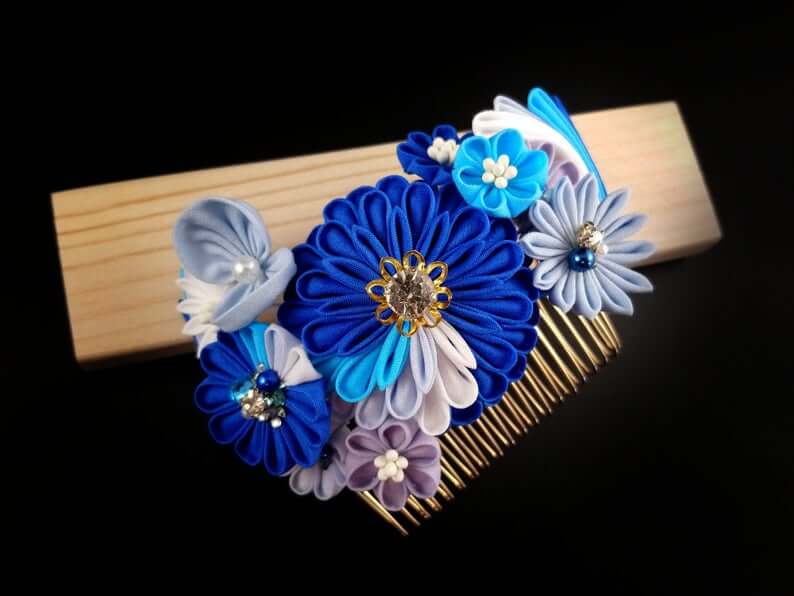
Large Ocean Wave Chrysanthemum Headpiece 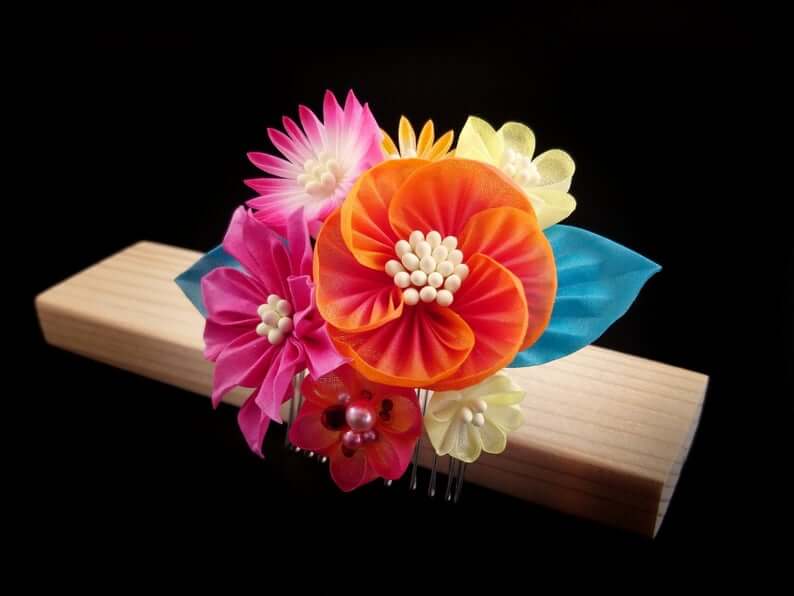
Orange & Pink Woodland Bouquet Headpiece 
Frogs and Tadpoles Brooch 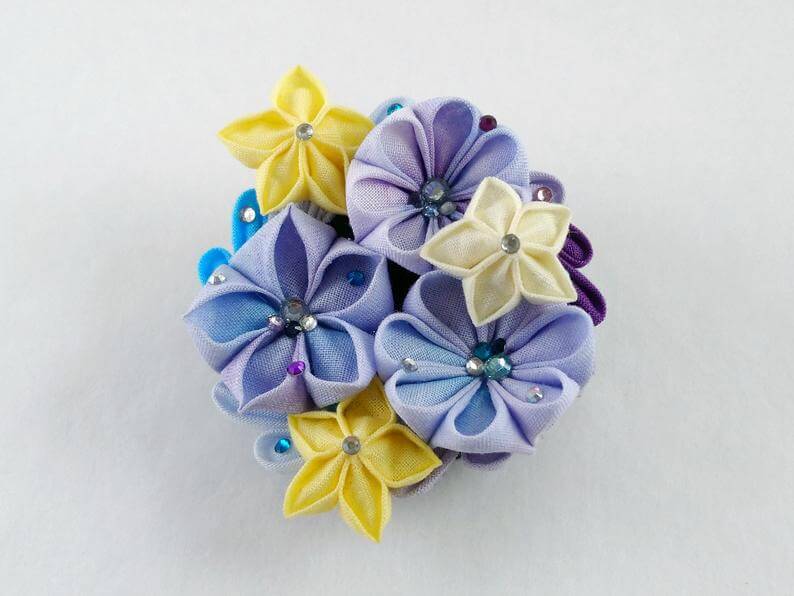
Stars and Nebula Universe Brooch 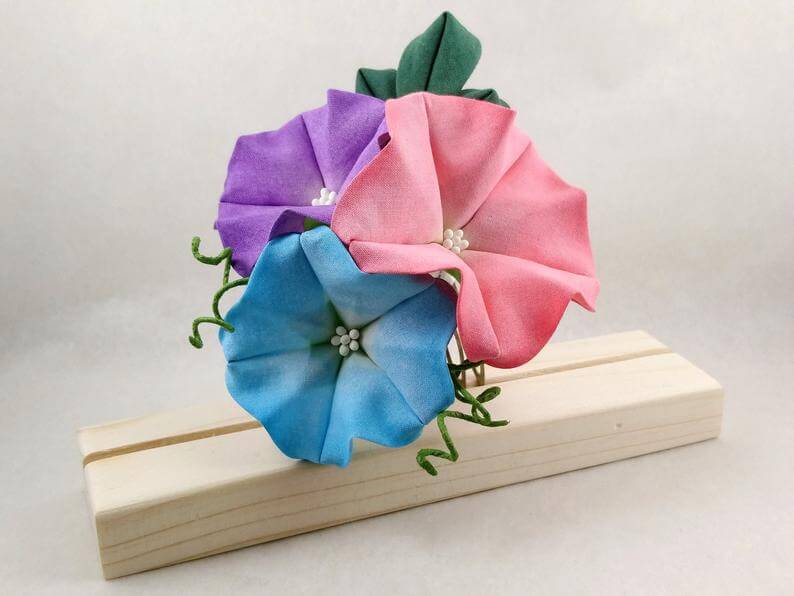
Handpainted Morning Glory Tsumami Zaiku Kanazashi Headpiece

